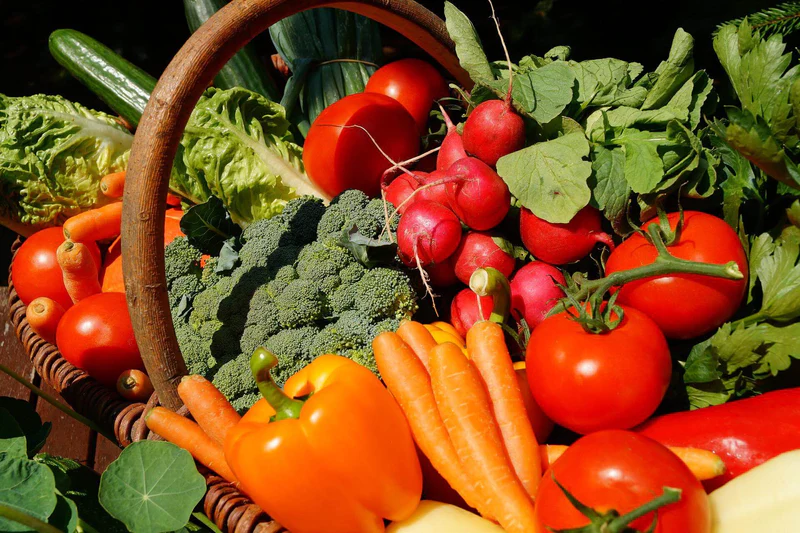Table of Contents
Wondering how to make vegetables attractive for your kids? Read on to discover some easy tips and tasty recipes that all parents can use to change their children’s habits for the better.
Many of us are well aware of the obesity crisis that is affecting our nation’s children. Even though the problem was identified long ago, CNN reports that the rates of obesity continue to increase, especially in younger children.
Experts are in consensus that the battle over this plague must start and end in the kitchen. As a society, we have moved far away from the sources of real food, and often fill our meals with processed items that lead to poor health and weight issues.
We’ve all long known that eating more fruits and raw vegetables is key to a healthy diet. Everyone is equally familiar with kids’ notorious disdain for anything green on their plates. Since vegetables are unquestionably helpful in weight management, it is crucial for parents to take drastic steps to incorporate more plant-based ingredients into kids‘ diets.
Here are some tips from SOL + SPIRIT on how to make your children’s meals healthy and tasty.
Attack the Childhood Obesity Problem From Multiple Angles
Children eat junk food because they are accustomed to it, it tastes good, and they lack information and connection to real food sources.
In order to incorporate healthier eating habits, parents need to touch on each of these causes for poor diets. Children become used to processed foods because parents make them available for them. Rethink your family’s diet as one with vegetables featured prominently in all meals and snacks, maximize flavor, and teach your kids about where food comes from.
Add Tasty Vegetables to Your Meals
Finding real food that tastes as good as high-fat, high-carb and refined sugar junk food is challenging, but by no means impossible. And, as ZenBusiness points out, if you work from home, you benefit from being better able to source and prepare healthy meals – the kitchen may be just down the hall.
Determine your kids’ favorite foods and snacks, and make a vegetables-based recipe or similar dish for them to try. If mashed potatoes are a family meal staple, try swapping them out for mashed cauliflower. These swaps can be done in steps – trying a half-potato, half-cauliflower mix as a starter.
Sometimes, kids really are just looking for seasoning and texture. Instead of only serving bland steamed veggies, try high-heat roasting and sprinkle on different spices and herbs. During warm months, try grilling different vegetables and experiment with salads and cold-soups, such as gazpacho.
Keep Vegetables Fresh For Longer
If not stored properly, vegetables can spoil fast, making them lose appeal for kids and harder to incorporate into their meals. This reason alone can make parents stock up on frozen foods and ready-made meals that have no nutritional value, but last longer.
Don’t sacrifice your family’s health just because you’re afraid your produce will spoil at rapid speed! If you want to save money and wish to avoid throwing food away, there are some ways to make your raw veggies last longer, including:
- Avoid washing and chopping your veggies before you consume them.
- Make sure you store your food properly. Use organic cotton reusable produce bags to keep your fruits and vegetables organized and in prime condition for longer. For vegetables that go bad fast, the freshie food saver bag is a Godsend. This type of bag allows you to store food for weeks, and is especially ideal for keeping fruits & veggies hydrated and fresh in a breathable environment.
When You Absolutely Must, Go Stealthy with Your Veggies
If you cannot get your picky eaters to eat a healthy snack such as roasted Brussels sprouts, carrot oven fries or grilled zucchini, Yumble explains that you may have no choice but to sneak vegetables into meals. While this method doesn’t necessarily solve the problem ideally through changing habits, it does pack meals with vitamin C, fiber and other vegetable benefits.
For kids who love pasta and sauce, incorporating vegetables is much easier. First, tomato sauce is already packed with nutrition – especially if it is homemade. You can increase its health content by adding pureed sautéed vegetables.
If you are looking for ways to diversify the recipe, spinach, kale, steamed broccoli, and summer squash are easy to blend into a sauce, but so are boiled carrots, beets, sweet potatoes and sautéed mushrooms.
Your veggie-packed tomato sauce can do double or triple duty, too. Use it as a pizza sauce, and try swapping out dough for a cauliflower crust.
Add in some chilies and taco spices and your tomato sauce can be the base for chili or tacos. When having taco night, instead of lettuce, try adding finely shredded cabbage or broccoli slaw as a garnish.
Bring Your Kids Close to the Source of Their Food
When children understand where food comes from, they will have a greater appreciation and interest in nutrition. Farms often have family fun days, where kids can see farming equipment and learn about how different types of produce grow and are harvested. Local farmers markets are other easily accessible ways to introduce your kids to where their food comes from.
Ultimately, raising your kids‘ love for vegetables and incorporating them into diets doesn’t happen overnight, but is a process. Start small with some flavor-packed recipes, sneak some healthy veggies into your children’s favorite meals, and provide them with some education about food. In the end, it will not be only your kids but your whole family that experience the benefits of vegetables.
You might also enjoy:
- Ultimate Guide On How To Use Reusable Produce Bags
- 8 Eco Friendly Shopping Switches To Make This Year
- How to Keep Produce Fresh 3x Longer
